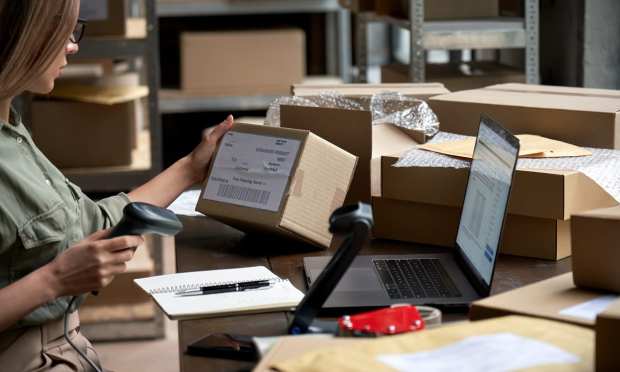Solving B2B eCommerce Friction At The Intersection Of Payments And Trade Credit

As B2B eCommerce accelerates its technological innovation, and as adoption grows, it continues to look toward the world of B2C to implement optimized end-user experiences – for both the buyer and the seller.
But B2B eCommerce is inherently more complex than consumer-facing sales and payments flows, thanks to the need for corporate buyers to establish payment terms or purchase on credit with suppliers.
Amid the B2B digital commerce boom, there is an opportunity to not only transform the workflows of buying and selling, but also a chance for innovators to tackle the payments experience – which, according to Credit Key CEO John Tomich, has a significant impact on B2B vendors’ ability to extend a positive experience to corporate customers.
While the practice of extending trade credit to corporate customers is a uniquely B2B experience, the growing traction of consumer-facing point-of-sale (POS) financing offerings like Klarna, PayPal Credit and Affirm have sparked new opportunities in the B2B landscape, he said.
“We’ve observed over the years in B2C eCommerce that the innovation of payments drives more activity in the shopping cart,” noted Tomich. “If you give people different options – whether that’s PayPal, Affirm, Klarna or other alternative payment options – at the point of sale in eCommerce, that is a catalyst for shoppers to add more to their carts and increase the average order value.”
Challenge of Extending Trade Credit
Extending trade credit directly at the point of sale is a major opportunity for B2B sellers to similarly drive up sales. Yet while B2B eCommerce continues to evolve, the trade credit arena continues to be stuck in legacy paper and manual processes.
Traditionally, said Tomich, B2B wholesalers and distributors would have to work through a long list of processes in order to extend trade credit to their customers while mitigating the risk of non-payment. That includes due diligence workflows like credit checks and trade references, processes that take at least a few days to complete, if not longer for businesses still relying on paper – even if they’re embracing digital commerce.
As a result, legacy trade credit flows could be holding back the overall modernization of B2B commerce. However, this pain point brings ample opportunity for innovation to bring trade credit along for the same digitization ride that the B2B eCommerce market is already experiencing.
“The transformation of B2B eCommerce is an opportunity to introduce this product to buyers and sellers,” said Tomich.
It’s also an opportunity for wholesalers and distributors to introduce the necessary functionality within their digital sales channels that allow them to compete with the likes of Amazon, he added.
The Intersection of Payments and Trade Credit
Allowing B2B buyers to purchase on trade credit and establish payment terms is only the first step to providing an optimized shopping experience, however. With the payments process a key component of a positive user experience, Tomich noted that it’s vital for trade credit workflows to be as seamlessly embedded into the checkout process as possible.
It’s a concept that is again influenced by the business-to-consumer eCommerce space as more online shoppers seek financing solutions directly at the moment of purchase. In order to achieve this in the B2B landscape, it’s important to understand that POS trade credit sits at the intersection of both payments and financing, a reality that is blurring the lines between the two processes in the world of B2B eCommerce.
“Like a lot of POS financing companies, we sometimes look like a payment method, and sometimes like a credit product,” said Tomich.
For B2B sellers, many of whom are migrating their sales operations online for the first time, this can be a particularly challenging solution to offer without help from a third party. Yet as more B2B buyers seek to make purchases in the same ways as individual consumers, the need for POS trade credit could increase.
This is particularly true as online shoppers search for alternatives to credit cards, a payment method that similarly sits at the intersection of payments and credit, and one that Tomich said companies like Credit Key are looking to disintermediate.
Indeed, while commercial cards are gaining traction, Tomich noted that POS financing can offer a more flexible and functional experience for buyers, including greater flexibility of repayment terms and a more automated experience in which shoppers don’t have to manually enter credit card and billing details at the moment of checkout.
It’s all about “deep credit lines, more product flexibility and functionality, and a better user experience,” he said.
With the pandemic accelerating B2B eCommerce adoption, it’s clear that the payments experience will be integral to driving traction. As trade finance is an area of B2B trade that is ripe for innovation and digitization, the opportunities will continue to grow to more closely marry the B2B commerce, payments and financing experience for both buyer and seller.
